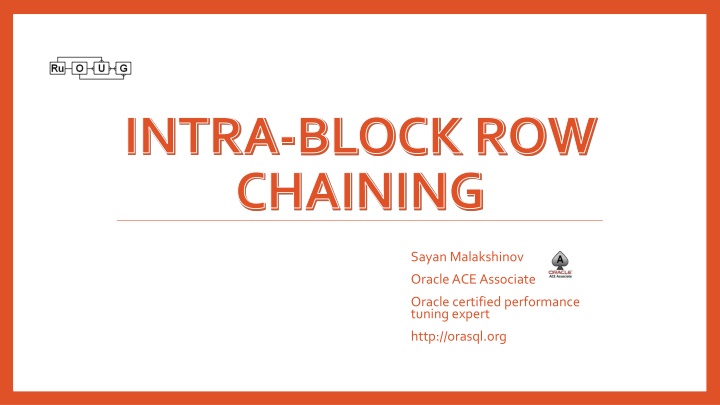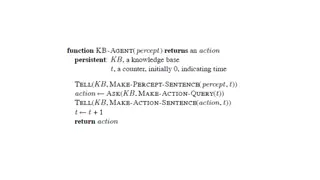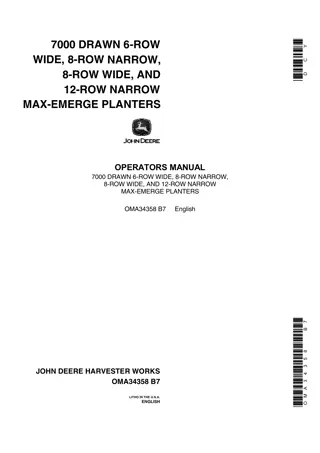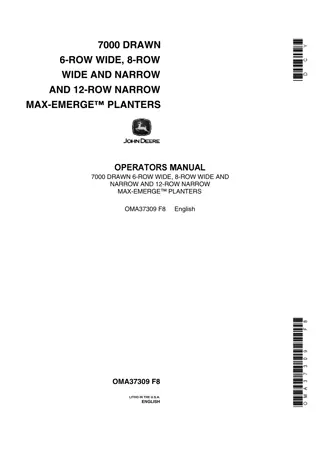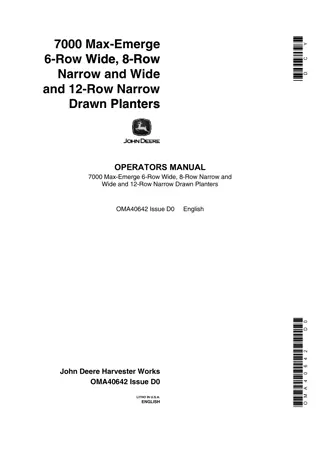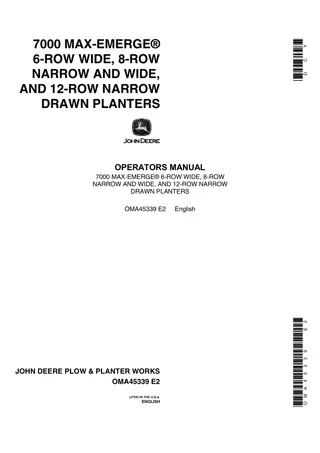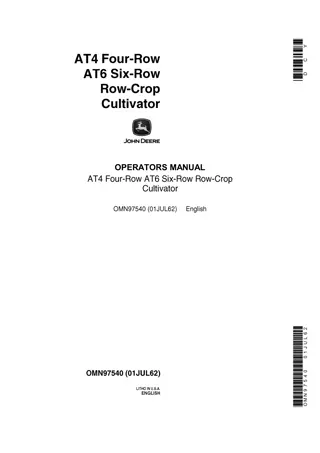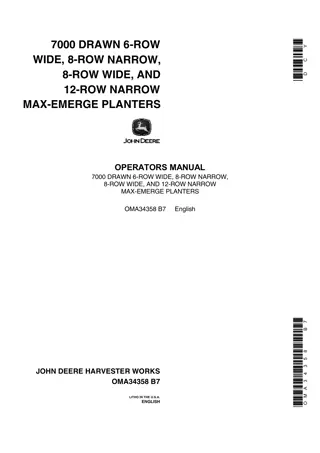Intra-Block Row Chaining in Oracle
Intra-block row chaining occurs in Oracle when a table has more than 255 columns, leading to rows being chained within the same block. Learn how this affects data retrieval and performance tuning in Oracle databases with detailed examples and documentation.
Download Presentation

Please find below an Image/Link to download the presentation.
The content on the website is provided AS IS for your information and personal use only. It may not be sold, licensed, or shared on other websites without obtaining consent from the author.If you encounter any issues during the download, it is possible that the publisher has removed the file from their server.
You are allowed to download the files provided on this website for personal or commercial use, subject to the condition that they are used lawfully. All files are the property of their respective owners.
The content on the website is provided AS IS for your information and personal use only. It may not be sold, licensed, or shared on other websites without obtaining consent from the author.
E N D
Presentation Transcript
INTRA-BLOCK ROW CHAINING Sayan Malakshinov Oracle ACE Associate Oracle certified performance tuning expert http://orasql.org
The documentation states: When a table has more than 255 columns, rows that have data after the 255th column are likely to be chained within the same block. This is called intra-block chaining. A chained row s pieces are chained together using the rowids of the pieces. With intra-block chaining, users receive all the data in the same block. If the row fits in the block, users do not see an effect in I/O performance, because no extra I/O operation is required to retrieve the rest of the row.
Example 1 1. Create table TEST with 355 columns (c_1, c_2, , c_355) 2. insert into test(c_300) values(2) 3. dump data blocks
bdba: 0x018019f7 block_row_dump: tl: 260 fb: -----L-- lb: 0x1 cc: 255 col 0: *NULL* col 1: *NULL* ... col 252: *NULL* col 253: *NULL* col 254: [ 2] c1 03 tl row piece length fb flags: H - header F first row piece L last piece lb lock byte (# of ITL entry) cc number of columns The resulted dump file shows us: 1. Both row pieces are in the same block 0x018019f4 2. They contain only first 300 columns (trailing 55 columns are NULLs) 3. First row piece contains columns c_46 c_300, 4. Second row piece contains columns c_1 c_45 (they all are NULLs) tl: 54 fb: --H-F--- lb: 0x1 cc: 45 col 0: *NULL* col 1: *NULL* ... col 43: *NULL* col 44: *NULL*
Example 2 1. Create table TEST with 355 columns (c_1, c_2, , c_355) 2. insert into test(c_1) values(null) 3. update test set c_300=2 4. dump data blocks
bdba: 0x018019f3 block_row_dump: tl: 260 fb: -----L-- lb: 0x1 cc: 255 col 0: *NULL* col 1: *NULL* ... col 253: *NULL* col 254: [ 2] c1 04 bdba: 0x018019f6 block_row_dump: bdba: 0x018019f7 block_row_dump: tl: 54 fb: --H-F--- lb: 0x1 cc: 45 col 0: *NULL* col 1: *NULL* col 2: *NULL* ... col 43: *NULL* col 44: *NULL* bdba: 0x018019f4 block_row_dump: bdba: 0x018019f5 block_row_dump: As you can see, there is no intra-block chaining second row piece was created in another block.
Example 3 1. Create table TEST with 355 columns (c_1, c_2, , c_355) 2. insert into test(c_1) values(1) 3. update test set c_300=2 4. update test set c_301=3 5. update test set c_302=4 6. dump data blocks
bdba: 0x018019f3 block_row_dump: tl: 10 fb: -------- lb: 0x1 cc: 1 col 0: *NULL* bdba: 0x018019f4 block_row_dump: tl: 264 fb: -----L-- lb: 0x1 cc: 255 col 0: *NULL* col 1: *NULL* ... col 249: *NULL* col 250: *NULL* col 251: *NULL* col 252: [ 2] c1 03 col 253: [ 2] c1 04 col 254: [ 2] c1 05 bdba: 0x018019f6 block_row_dump: tl: 10 fb: -------- lb: 0x1 cc: 1 col 0: *NULL* bdba: 0x018019f7 block_row_dump: tl: 56 fb: --H-F--- lb: 0x1 cc: 45 col 0: [ 2] c1 02 col 1: *NULL* col 2: *NULL* col 3: *NULL* ... col 42: *NULL* col 43: *NULL* col 44: *NULL*
This dump shows us 4 row pieces: First row piece contains 255 columns, second 45, and 2 row pieces just by one row. So we can analyze it step-by-step: 2. insert into test(c_1) values(1) After insert we have just one row piece with 1 field. C_1 3. update test set c_300=2 After this update, we have 2 row pieces: 1) c_1-c_45 2) c_46-c_300 C_1 C_45 C_46 C_300 4. update test set c_301=3 This update split row piece c_46-c_300 into 2 row pieces: 1) c_46 2) c_47-c_301 So we have 3 row pieces now: c_1-c_45, c_46, c_47-c_301 C_46 C_47 C_301 C_1 C_45 5. update test set c_302=4 This update split row piece c_47-c_301 into 2 row pieces: 1) c_47 2) c_48-c_302 And we ve got 4 row pieces: c_1-c_45, c_46, c_47, c_48-c_302 C_46 C_47 C_48 C_302 C_1 C_45
Example 4 1. Create table TEST4 with 355 columns (c_1, c_2, ..., c_355) grep -c "^bdba" Count of bdba: 103 2. insert into test(c_1) values(null) grep -c "^tl: " Count of row pieces: 101 3. update columns C_256..C_355: for i in 256..355 loop execute immediate 'update test set c_'||i||'='||i; end loop; 4. dump data blocks
Summary One row piece can store up to 255 columns Oracle splits fields by row pieces in reverse order Oracle doesn t store trailing null fields in a row (not in row piece) Before 12.2: Next row piece can be stored in the same block only with inserts. When you run update, oracle will place new row piece into another block.
